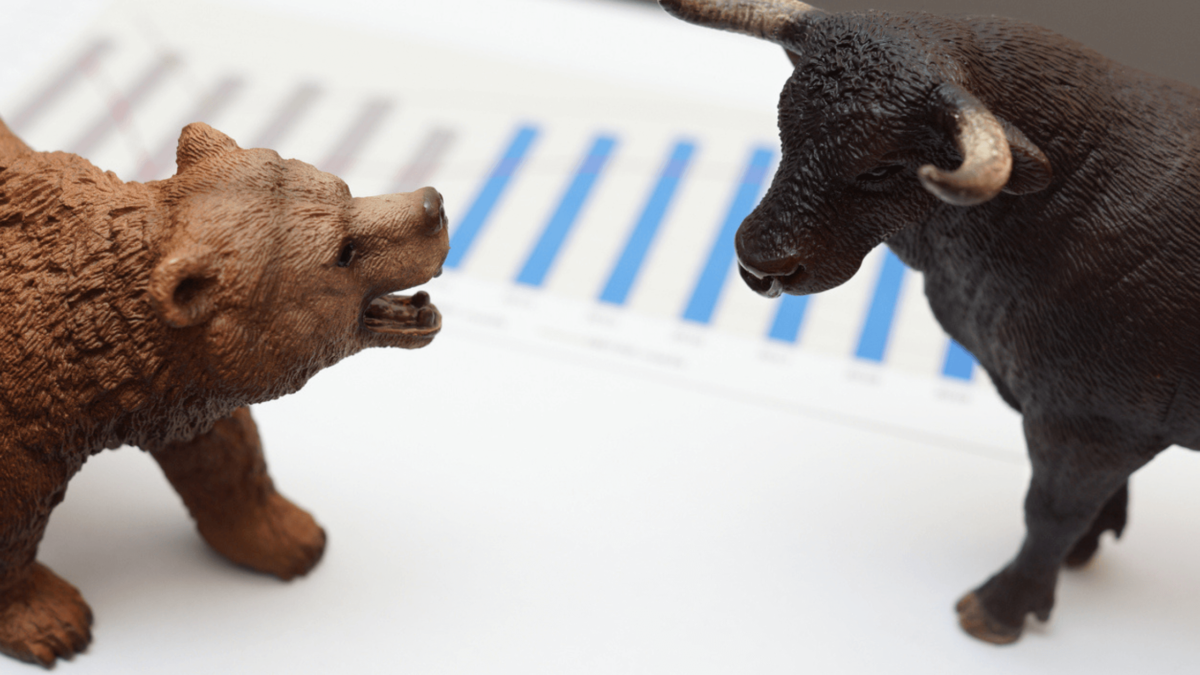Buy the Dip in Stocks: Are We There Yet?
May 23, 2022

Recently, the focus in stock markets has been on the big “R” of “Recession” in the US. The S&P 500 Index enjoyed a bounce last week that faded later in the week.
That bounce was a continuation from the preceding week as it approached the 3,820 technical support zone.
This area is a convergence of the 38.2% retracement of the 20 March-22 January move and the price objective from the head and shoulders formation of 21 December-22 January.
Rebounds at the 38.2% retracement are not unusual in bear markets. Indeed, the rebound in the S&P 500 during the 2008 bear market was quite sizeable before breaking lower.
That was during the early stage of the bear market, and the stock market’s losses were much greater after that.
Not yet at the capitulation stage
Back to the present. Despite touching bear market territory, this does not appear to be the end of the decline.
Major reversals tend to have higher volatility, volumes, and put to call ratios than what we have seen so far. The CBOE VIX Index, the defacto proxy for market volatility, is still well below cyclical reversal points.
You know that Warren Buffet line: “Be greedy when others are fearful”? Well, I haven’t seen much fear yet as to encourage me to be greedy.
Another gauge is the US high-yield credit spread against the year-on-year gains or losses on US equities. Peaks in credit spreads are turning points in equities.
But credit spreads are still modest and the recent uptick in those spreads has been very orderly. I don’t think we are anywhere near a peak in credit spreads and – by extension – a peak in fear.
Improved market sentiment but could be temporary
So, the market is still relatively calm. Indeed, so calm I suspect there could be further attempts to rebound in coming weeks.
One fundamental driver could be the recent pull back in the 10-Year US Treasury (UST) yield, from a high of 3.2% on 9th May to 2.79% at last week’s close.
Reinforcing that, the Fed Funds Futures market’s pricing of rates probabilities by end-2022 has been drifting sideways over recent weeks.
This could mean that near term, we may have seen a temporary peak in rates fears.
Another way to view this is in the possible near-term peaking of the market consensus on the Fed Funds rate by the end of this year.
There has been a recent easing of US rates expectations in May compared to April, according to the Bloomberg consensus forecast.
Be warned that this is highly unlikely to be the end of the rise in rates and the 10-Year UST yield.
Far from it. We have seen a breakout above a long downtrend in the 10-Year UST yield and that is significant. But that is a medium-term story.
Some optimism about avoiding recession
Very near-term, sentiment could be lifted by the small bounce in real retail sales reported last week, for the month of April.
And a bit more of a lift in US consumer spending for May could come from continuation of the lift in motor vehicle sales from pent-up demand.
Adding to that, continuation of the bounce in restaurant spending will also help consumer expenditures for 2Q22’s GDP growth.
All of this could result in a small positive quarter-on-quarter growth for US GDP in 2Q22.
That could give hope to the market that the US would dodge a recession, driving a technical rebound at or ahead of 3,820.
But to repeat, US rates and government bond yields are likely headed for much higher levels. And that could bring a fresh round of selling.
ASEAN outperforming the US
Finally, an update on ASEAN. Our ASEAN trade idea continues to outperform the US market.
That’s in line with our idea of global value and commodities plays outperforming growth stocks and the general market.
So, the MSCI ASEAN has proved more defensive in relative terms than the US market – it is down 6.3% year-to-date, compared to a decline of 19.2% for the MSCI USA.
And our top pick within ASEAN, Indonesia, continues to outperform the rest of ASEAN. The MSCI Indonesia is up nearly 3% year-to-date – one of few absolute return winners around.
I, of course, note the recent pullback in Indonesian equities. But that appears to be more about the pullback in global commodities producer stocks – particularly agricultural stocks – than anything specific to Indonesia.
If I am right about global commodities stocks continuing to trend higher, Indonesian stocks should continue to outperform.
Say Boon Lim
Say Boon Lim is CGS-CIMB's Melbourne-based Chief Investment Strategist. Over his 40-year career, he has worked in financial media, and banking and finance. Among other things, he has served as Chief Investment Officer for DBS Bank and Chief Investment Strategist for Standard Chartered Bank.
Say Boon has two passions - markets and martial arts. He has trained in Wing Chun Kung Fu and holds black belts in Shitoryu Karate and Shukokai Karate. Oh, and he loves a beer!







